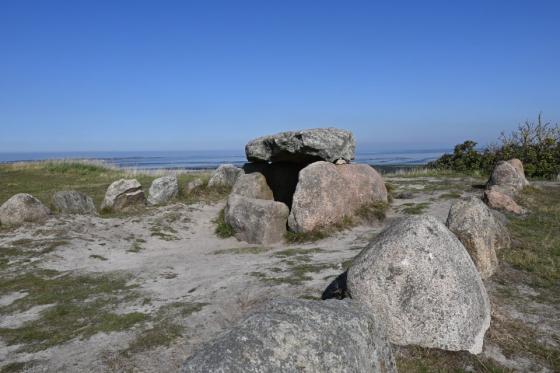taken from the on-site hünen.kulTOUR information board:
Tipkenhoog
In the mighty Tipkenhoog, presumably from the Bronze Age, the tomb of the guardian of the Sylt warriors (fighting giants) in the fight against the Danes is said to lie. “Tipken, the Heidumer Hahn, had a so-called watchtower (...) at the extreme south-east of the land, the site of which is still known as the Tipkentower. The giant Tipken was killed during a fight with the Danish warriors and was buried by his tower under the Tipkenhoog.”
The Tipkentower is said to have been located immediately south of the mound. When the Tipkenhoog was excavated in 1873, only a few stone packs were found. The Tipkenhoog was badly damaged by fortifications during World War II, but restored in its old form in 1944. In 1982 it was restored.
The Keitumer Biike (bonfires) was ignited on the Tipkenhoog until the mid-1980s.

























